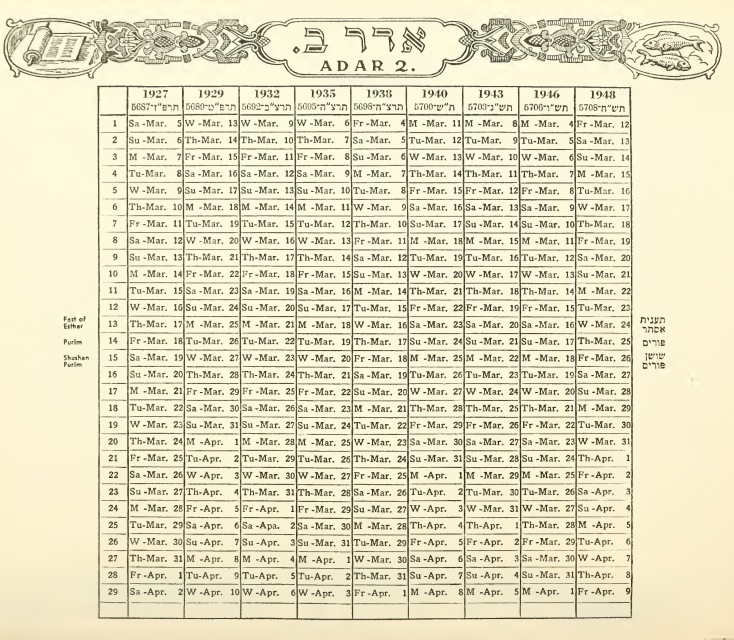2020. 1. 30. 19:48ㆍ카테고리 없음

The Jewish calendar is based on both solar and lunar years. On the first of Tishri, which is in fact the seventh month—the calendar has different starting points. The first six months of the Jewish calendar are Nissan, Iyar, Sivan, Tammuz, Av and Elul. The final six months of the Jewish calendar are Tishri, Cheshvan, Kislev, Tevet, Shevat and Adar.
This page uses content from the English. The original article was at. The list of authors can be seen in the. As with the Calendar Wikia, the text of Wikipedia is available under Creative Commons License. The Hebrew calendar (Hebrew: הלוח העברי) or Jewish calendar is the annual calendar used in Judaism. It determines the dates of the Jewish holidays, the appropriate Torah portions for public reading, Yahrzeits (the date to commemorate the death of a relative), and the specific daily Psalms which some customarily read.

Jewish Calendar 2017 2018 Printable

Two major forms of the calendar have been used: an observational form used prior to the destruction of the Second Temple in 70 CE, and based on witnesses observing the phase of the moon, and a rule-based form first fully described by Maimonides in 1178 CE, which was adopted over a transition period between 70 and 1178. The 'modern' form is a rule-based lunisolar calendar, akin to the, measuring months defined in lunar cycles as well as years measured in solar cycles, and distinct from the purely lunar and the almost entirely solar. Because of the roughly 11 day difference between twelve lunar months and one solar year, the calendar repeats in a Metonic 19-year cycle of 235 lunar months, with an extra lunar month added once every two or three years, for a total of seven times every nineteen years.
Jewish Calendar Today
As the Hebrew calendar was developed in the region east of the Mediterranean Sea, references to seasons reflect the times and climate of the Northern Hemisphere. Biblical period Jews have been using a since Biblical times. The first commandment the Jewish People received as a nation was the commandment to determine the New Moon. The beginning of Exodus Chapter 12 says 'This month (Nissan) is for you the first of months.' The months were originally referred to in the Bible by number rather than name. Only four pre-exilic month names appear in the Tanakh (the Hebrew Bible): Aviv (first; literally 'Spring', but originally probably meant the ripening of barley), Ziv (second; literally 'Light'), Ethanim (seventh; literally 'Strong' in plural, perhaps referring to strong rains), and Bul (eighth), and all are Canaanite names, and at least two are Phoenician (Northern Canaanite).
Jewish Calendar Converter
It is possible that all of the months were initially identifiable by native Jewish numbers or foreign Canaanite/Phoenician names, but other names do not appear in the Bible. Furthermore, because solar years cannot be divided evenly into lunar months, an extra embolismic or intercalary month must be added to prevent the starting date of the lunar cycles from 'drifting' away from the Spring, although there is no direct mention of this in the Bible. There are hints, however, that the first month (today's Nissan) had always started only following the ripening of barley; according to some traditions, in case the barley had not ripened yet, a second last month would have been added. Only much later was a systematic method for adding a second last month, today's Adar I, adopted.
